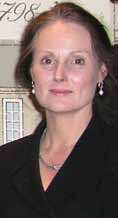Patience, please, as voter processing system goes paperless
by COMO Staff
July 23, 2010

We’ve started implementing our new “EPollbook” voter processing system that will allow our poll workers to handle the check-in process electronically rather than through the paper precinct books that were previously used.
This project is the result of several years of research, cost benefit analysis and months of design, usability testing and training. Electronic poll books have been successfully implemented in other areas of the country, where they have speeded voter processing, improved accuracy and reduced costs. For several years I have been putting aside money from annual state funding to cover our implementation costs.
Our biggest cost for any election is staffing our polling places and training a huge temporary workforce on an increasingly complex array of rules. Well-designed software will allow us to process more voters with fewer workers. In addition, training costs can be slashed because we will no longer have to train hundreds of workers on all the special situations that arise to ensure each voter is processed correctly. The software can walk them through the steps they need to perform and let them know such things as which ID is valid or invalid, how to process name changes, address changes, missing information and a series of other small problems that crop up at any election.
The project is not without its challenges, and we will certainly need several elections to fully implement all components of the system. For security reasons, none of these systems will be connected to the outside world or the Internet, and each system will be loaded from scratch on election morning.
Most IT departments would shudder at the thought of deploying separate PC networks with printers, scanners, servers and clients at more than 50 locations in less than an hour — at 4:30 in the morning.
The project is further complicated by the demographics of the temporary workforce available on Election Day to set up such a complicated system. More than half of the people who staff the polling places are senior citizens. Many of them have little or no experience with computers, and those who do might have special needs interacting with computers. As people age, simple tasks such as scrolling on a page, negotiating a mouse or locating a cursor on a screen can become trickier propositions.
To overcome these obstacles, we decided to design the system in-house rather than purchase predesigned software. Early in the process we started a series of usability design testing with groups of poll workers so we could adjust the software to overcome problems workers encountered. By closely watching our workers through the design phase, we appear to have overcome the aging issues so many of our workers face.
The daunting prospect of setting up the PC networks in each poll with myriad wires, ports, plugs and outlets was also the subject of usability testing. The development of a complex color-coding scheme for each plug and port and detailed checklists that are tested and adjusted has allowed the workers to negotiate it so far.
All of the processes voters are used to doing at the polling place — getting their identification and address verified and signing a poll book — will still be in place. With practice and your help, our poll workers will be able to process your check-in faster and more accurately.
So how can you help? Bring the sample ballot and polling place notification to the polling place when you come to vote. (It’s the white slip that comes in the mail before the election.) The barcode on the notification will allow workers to scan your record and speed you through the check-in. Also, please be patient. We hope during the next several election cycles to implement this at all our polls. Until then, we will continue to run dual systems as our dedicated workers navigate their way to the next phase of polling place technology.



